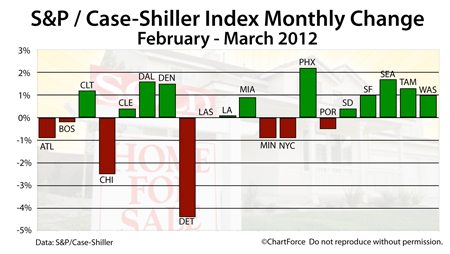 Mortgage markets worsened last week, halting a multi-week mortgage rate winning streak in Ohio and nationwide. With little economic news on which to trade, investors took their cues from the world’s central banks.
Mortgage markets worsened last week, halting a multi-week mortgage rate winning streak in Ohio and nationwide. With little economic news on which to trade, investors took their cues from the world’s central banks.
Fed Chairman Ben Bernanke neither dismissed nor promised new market stimulus in the near future, nor did leaders in the Eurozone. China, however, did cut its interest rates for the first time since the start of the global financial crisis.
Conforming mortgage rates edged higher amid a series of volatile trading sessions. Mortgage bonds moved more sharply as compared to prior weeks and analysts expect volatility to continue.
Last week, the biggest story was the ongoing deterioration of confidence within the Eurozone. While Greece continues to struggle under its national debt load, Spain emerged as the area’s newest bailout candidate. Then, on Saturday, the bailout was confirmed.
In seeking up to 100 billion euros ($125 billion), Spain becomes the fourth European Union nation to seek bailout funds since the debt crisis began nearly three years ago.
The Spain bailout temporarily overshadows investor concern for Greece and the nation-state’s June 17 election.
Sunday, the citizens of Greece will vote to elect a new government, the outcome of which may determine whether Greece remains a member of the European Union. If Greece leaves the EU, it would likely make a negative impact on equities markets, and would benefit U.S. mortgage rates.
This week, mortgage markets will take their cues from the political and economic developments abroad. Initially, investors are looking favorably upon the Spain resolution, and mortgage rates are rising as a result. As the Greek election nears, however, that trend may change.
With little or no data set for release, this week’s mortgage rates are subject to investor sentiment. Expect volatility.

 Beginning Monday, June 11, the FHA is changing its mortgage insurance premium schedule for the second time this year.
Beginning Monday, June 11, the FHA is changing its mortgage insurance premium schedule for the second time this year.